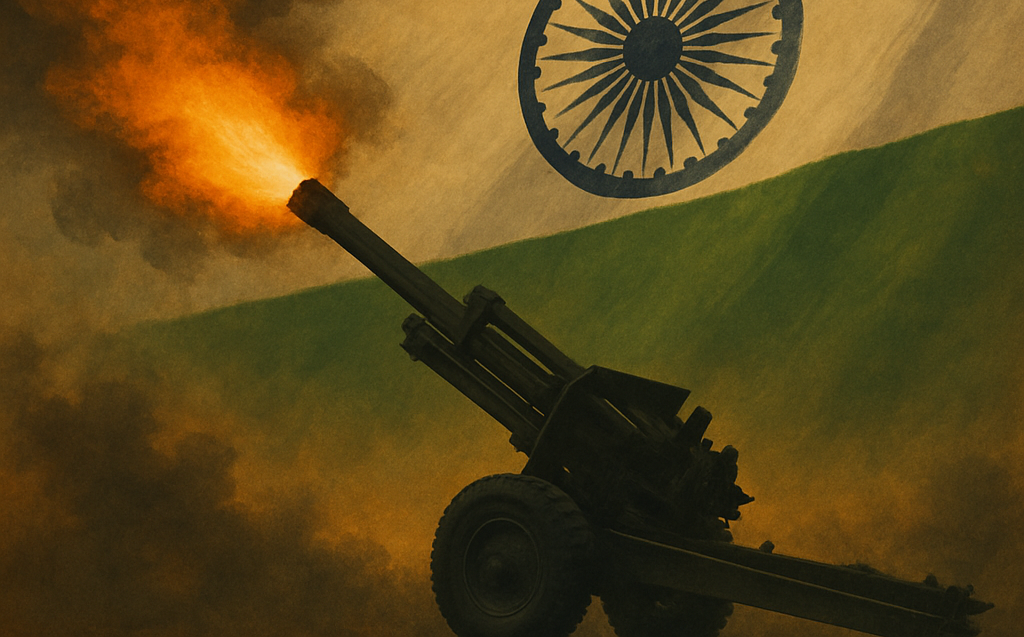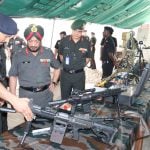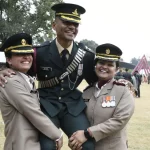Across the world, the 21-gun salute is the ultimate military honor, accorded to heads of state and celebrated fallen heroes. In India, too, this thunderous salute is used in national ceremonies and the funerals of martyrs who died for the nation. But why 21 shots? The answer lies in a blend of history, symbolism and tradition. What began as a naval practice has become the most powerful gesture of national respect – a final “thank you” to those who gave their lives.
Historical Origins
The salute’s roots go back to the Age of Sail. When warships entered friendly ports, they fired all their cannons to show they were unloaded and meant no harm. Early British custom was to fire seven cannon shots (the number of guns on a typical ship) and have forts on shore reply with three shots for each one. The result was 7×3 = 21. Odd numbers were chosen for luck (even numbers were seen as inauspicious or a sign of death), so the practice crystallized into a 21-shot salute. Over the centuries, “seven by sea, three by land” became the celebrated origin story of today’s 21-gun salute.
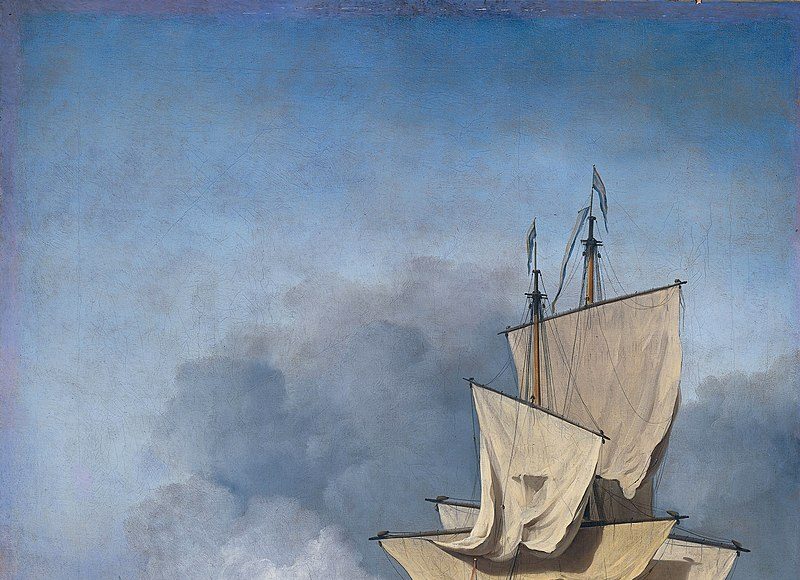
Global Standardization
By the 1800s, 21 shots had been formalized. In Britain, a 21-gun salute became the official honor for royalty around 1808. In the United States, regulations in 1842 made 21 the presidential salute, and by 1875 the US Navy adopted 21 rounds as the standard international salute, matching Britain and other powers. Over time, the 21-gun salute spread worldwide – an internationally recognized salute for a nation’s flag or chief of state. As one US source notes, 21-gun salutes eventually became the “international standard” for honoring leaders.
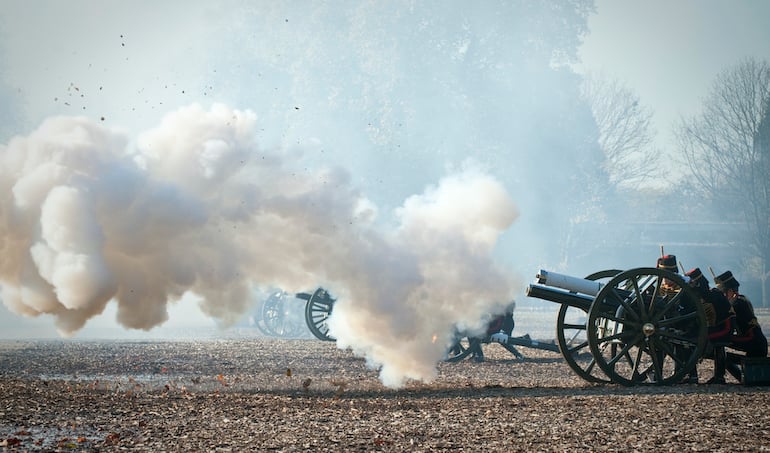
Significance in India
In India, the 21-gun salute is woven into national ritual and patriotism. For example, every Republic Day culminates with the President unfurling the tricolor as seven field guns fire three volleys (21 shots) during the national anthem. Some that this 21-gun salute “has been a constant feature of all our Republic Days”. While other explain that the 21-gun salute is considered “the highest honour of the country,” given to the President (as The Supreme Commander) and visiting heads of state on grand occasions. In other words, it is India’s ultimate military salute: a powerful tribute at flag ceremonies or the funerals of great leaders and martyrs alike. On Republic or Independence Day, the Army’s ceremonial battery (historically 25-pounder guns, now 105 mm howitzers) lines up to execute the salute, symbolizing national unity and respect for those who serve.
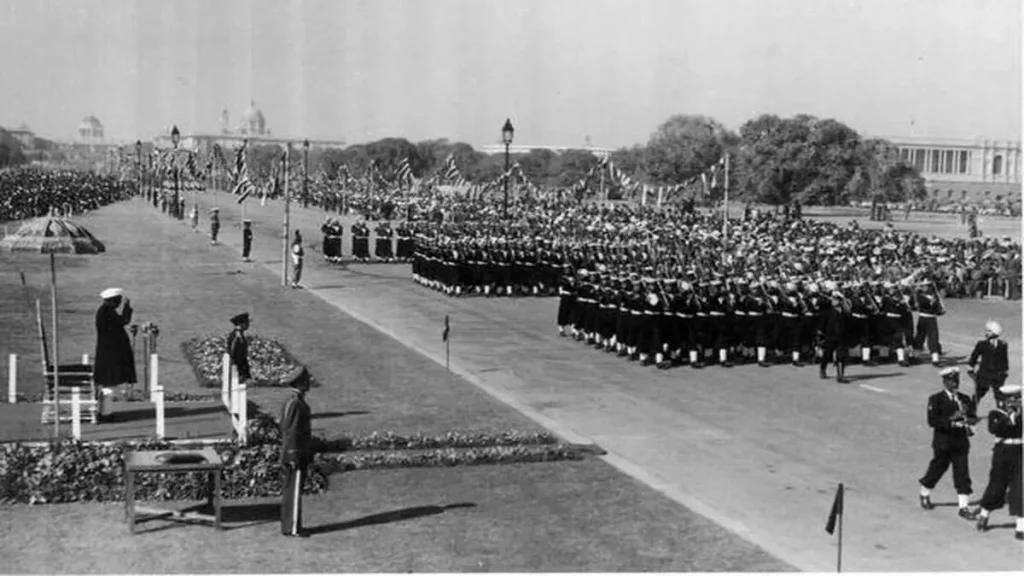
Why 21? Symbolic Meaning
The number 21 carries special resonance. Mathematically, it is 3×7, combining two numbers long held to be auspicious or complete. Seven was seen as mystical (seven days of creation, seven heavens, etc.), and three often represents completeness or divinity. The old tradition of forts firing three shots per ship shot made the number concrete (7×3), and that arithmetic became legendary. In folklore, even numbers were unlucky at sea, so an odd total like 21 was preferred. Put simply, 21 became a way to signify the supreme honor – the highest odd-number tribute that could be given. Some historians also note the astronomical angle: 21 (as 3×7) matched the known celestial bodies in the sky, though this is debated. In any case, the choice of 21 blends ritual tradition with a sense of completeness and highest respect.
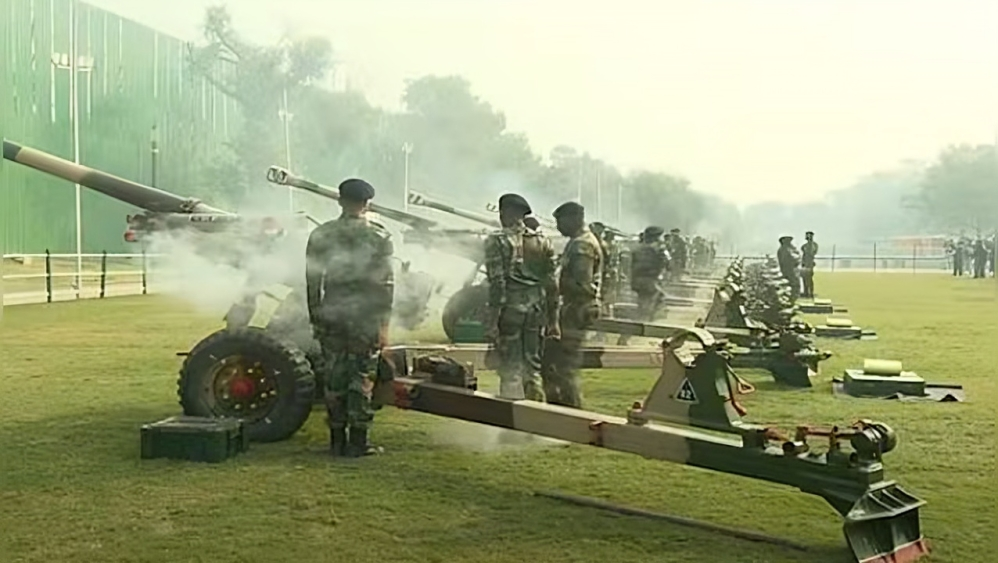
Modern Protocols
In practice today, 21-gun salutes follow strict protocols. Key occasions include:
- National ceremonies: On Republic Day (Jan 26) and Independence Day (Aug 15) in India, 21 blank shells are fired by the ceremonial battery after the President’s address or flag-hoisting. (Seven guns fire three times each, timed to cover the national anthem’s 52-second duration.)
- State occasions: New Presidents, visiting foreign heads of state or royal dignitaries receive a 21-gun salute as a sign of highest honor. For example, the Guide London notes that even a US President visiting the UK would get the 21-gun royal salute.
- Funerals: In state and military funerals, the 21-gun salute is reserved for the very top leaders and heroes. Heads of state (e.g. a President) get 21 rounds, while senior officers get lesser salutes (India’s Chief of Defence Staff received 17 rounds at his funeral). In honor ceremonies for decorated martyrs, 21 guns are often fired as part of full military honors (see examples below).
- Ordnance: The salute is delivered by artillery. In India, the Army’s 8711 Field Battery (Ceremonial) brings in six towed guns (historically WWII 25-pounders, now 105 mm Indian Field Guns) to fire 21 blank cartridges. (In fact, seven guns fire three rounds apiece.) These special “ceremonial” shells produce thunderous noise and smoke with no live projectile.
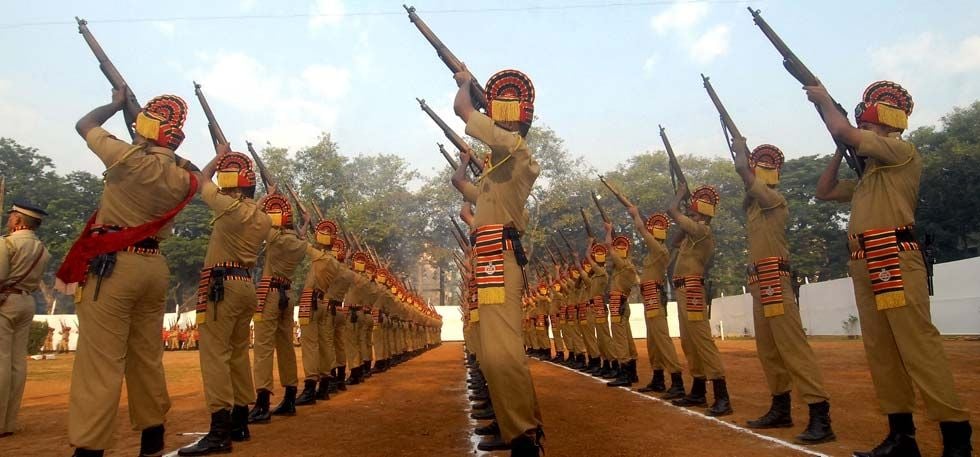
Difference Between 21-Gun Salute and 3-Volley Salute
It is important not to confuse the 21-gun salute with the “three-volley salute” seen at military funerals. The three-volley salute is performed by a rifle party (a firing squad of three soldiers) who fire three blank shots in unison at a funeral. This tradition dates to battlefield customs of pausing fire to clear the dead. By contrast, the 21-gun salute uses artillery (field guns) and is reserved for state honors and national leaders. In short, the three-volley is a final act by comrades at any soldier’s funeral, while the 21-gun salute is a grand, public salute reserved for the nation’s highest honorees.
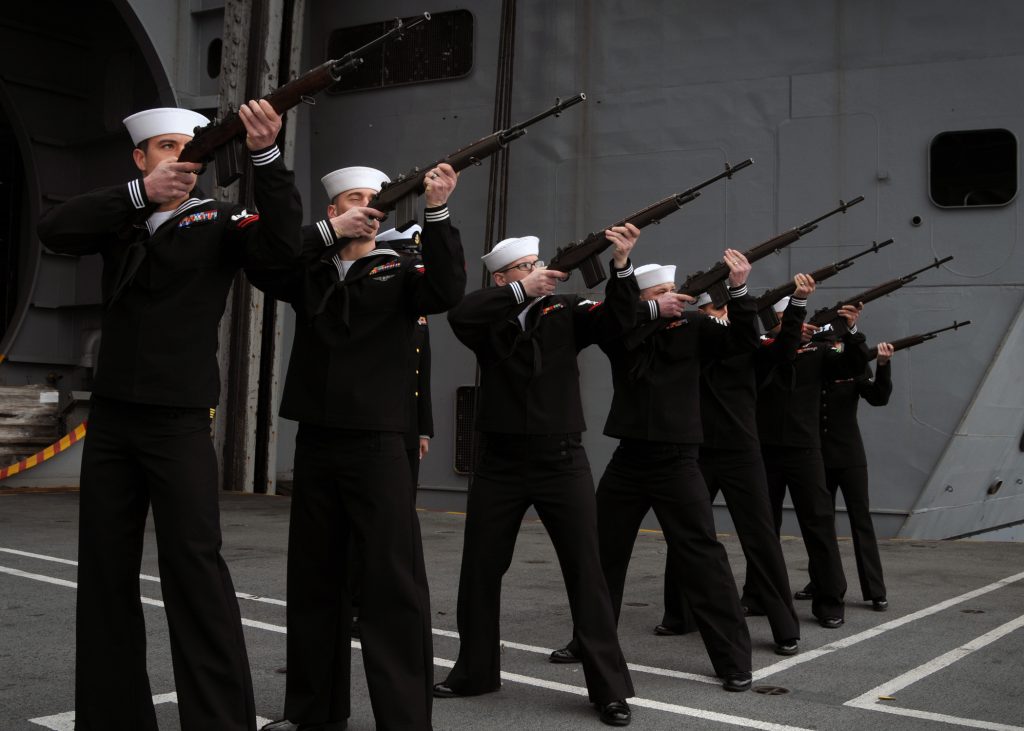
Emotional and National Impact
These thunderous salvos carry deep meaning for the nation. Iconic heroes are enshrined in memory at the very moment the guns roar. For example, Kargil war hero Captain Vikram Batra, PVC – “the face of the Indian soldier” – is still honored each July 7 in annual tributes. Such figures inspire the pride behind every salute. At Colonel Santosh Mahadik’s funeral in Maharashtra, villagers stood solemnly under the draped flag as the Army fired the 21-gun salute. Eyewitnesses later recalled the air filled with shouts of “Bharat Mata Ki Jai!” as the guns boomed. Similarly, during the cremation of young Agniveer Murli Naik, his mother lit the funeral pyre while “the Army offered a 21-gun salute. In that moment, grief turned to pride,” according to the press. In New Delhi, when India’s Chief of Defence Staff General Bipin Rawat was laid to rest, hundreds of soldiers and citizens marched behind his coffin under 17 artillery shots (the highest Army salute). Onlookers waved flags and cried “Hail Mother India!” as Prime Minister Modi vowed, “India will never forget their rich contribution.”. In all these scenes the gun salute blends mourning with national respect. Each shot is a communal salute – a final salute expressing that the nation stands behind its heroes.
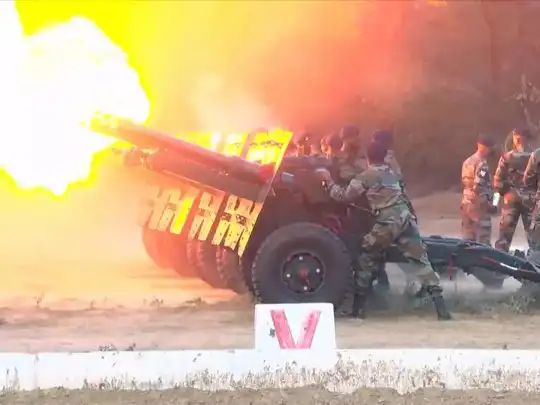
Other Types of Gun Salutes Around the World
While the 21-gun salute is the highest military honour, different numbers of gun salutes are used based on rank, protocol, or occasion. These include:
- 17-Gun Salute: In India, this is accorded to the Vice President, Chief Ministers, and Chiefs of the Armed Forces.
- 15-Gun Salute: Given to certain dignitaries like cabinet ministers, governors, or visiting ambassadors, depending on diplomatic rank and occasion.
- 11-Gun and 7-Gun Salutes: Reserved for high-ranking officials of lesser stature or during non-state ceremonial events.
- 19-Gun Salute: Used in countries like the United States and the UK for Vice Presidents, Deputy Heads of State, and certain high-ranking military officers.
- Custom Salutes by Nation: Some nations have their own traditions. For example:
- The UK Royal Navy uses gun salutes based on the rank of the admiral or royal.
- The US Military has an official table that prescribes the number of rounds (ranging from 11 to 21) based on office held.
These varying salutes are deeply rooted in military courtesy, reflecting rank, respect, and tradition — ensuring each officer, leader, or guest receives honours commensurate with their status.
Conclusion
The 21-gun salute is far more than a ritual; it is the nation’s loudest “thank you.” From its naval origins to India’s grand parades, it symbolizes complete honor and gratitude. As sources note, it is the “highest honor” a country can render. Every booming volley says: we remember your sacrifice. In India, as in other nations, the 21-gun salute remains the ultimate tribute – not mere ceremony but the deepest gesture of a grateful nation bidding farewell to its bravest.

